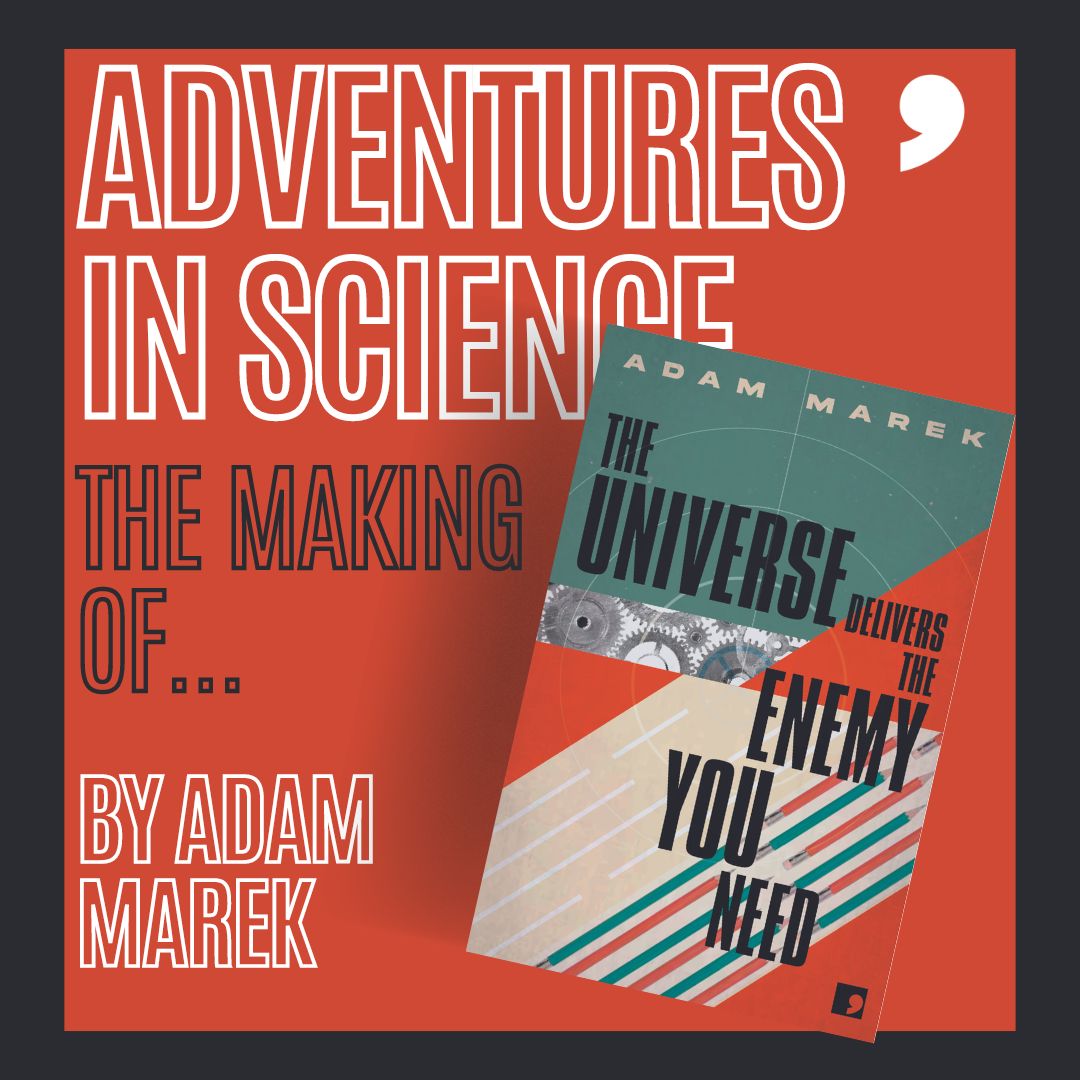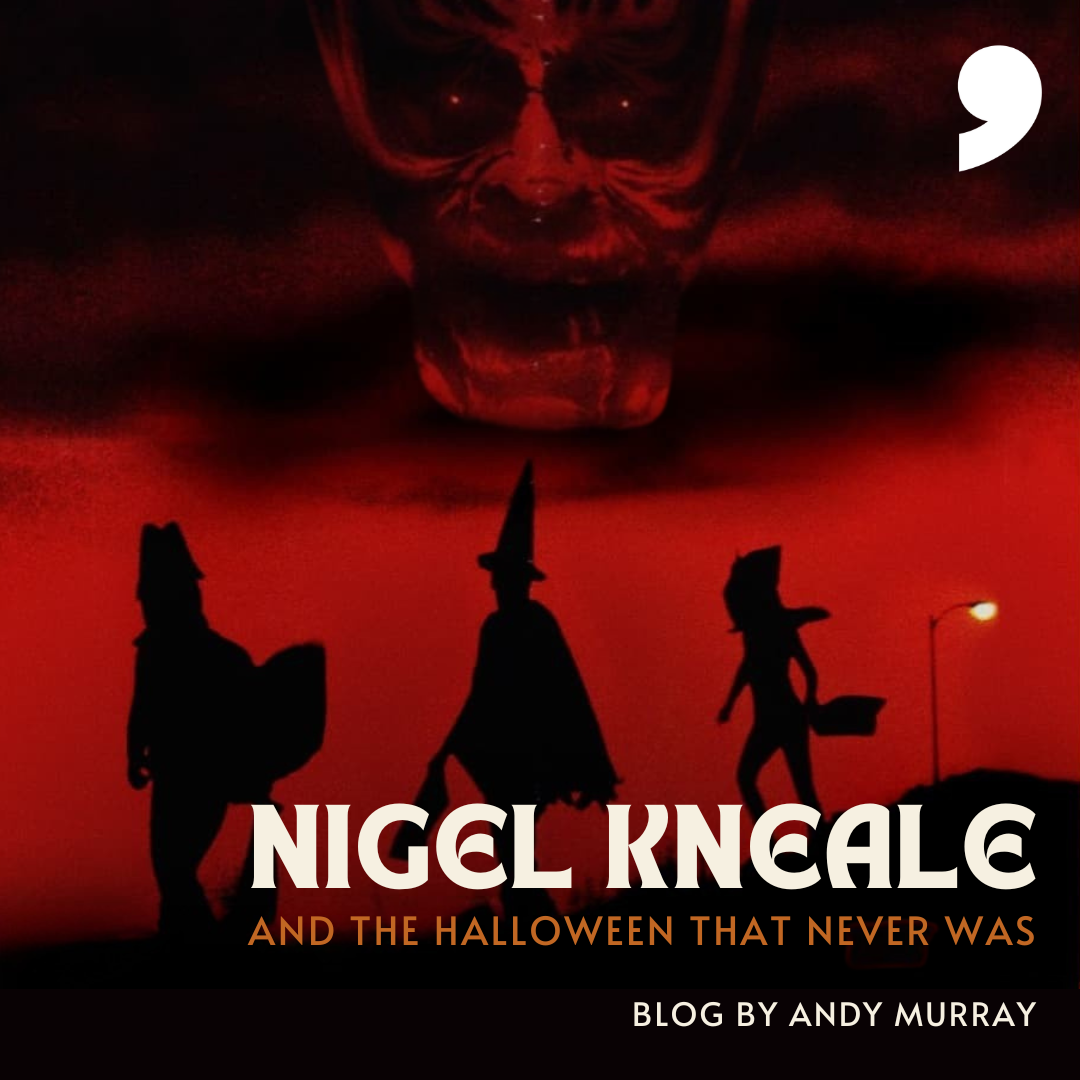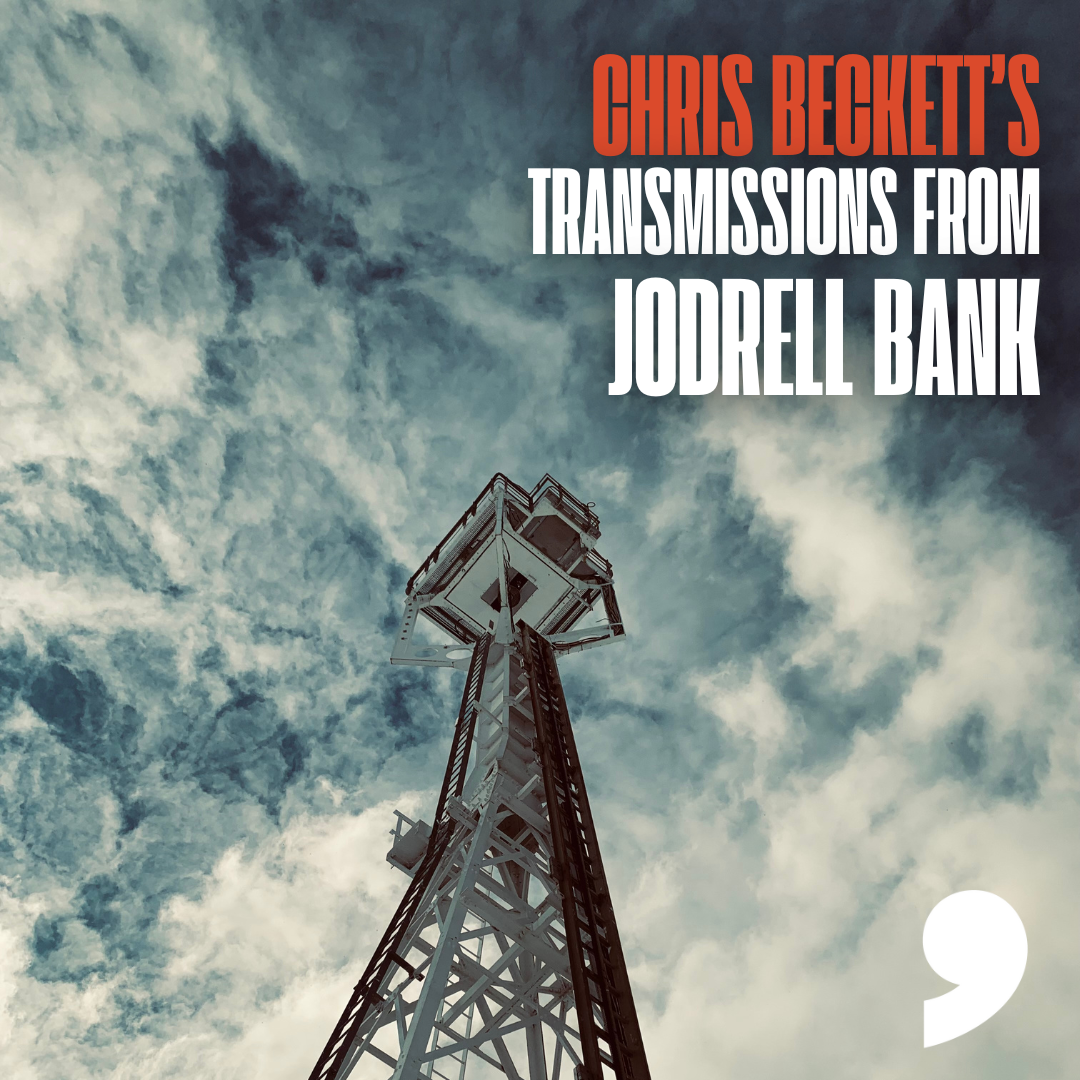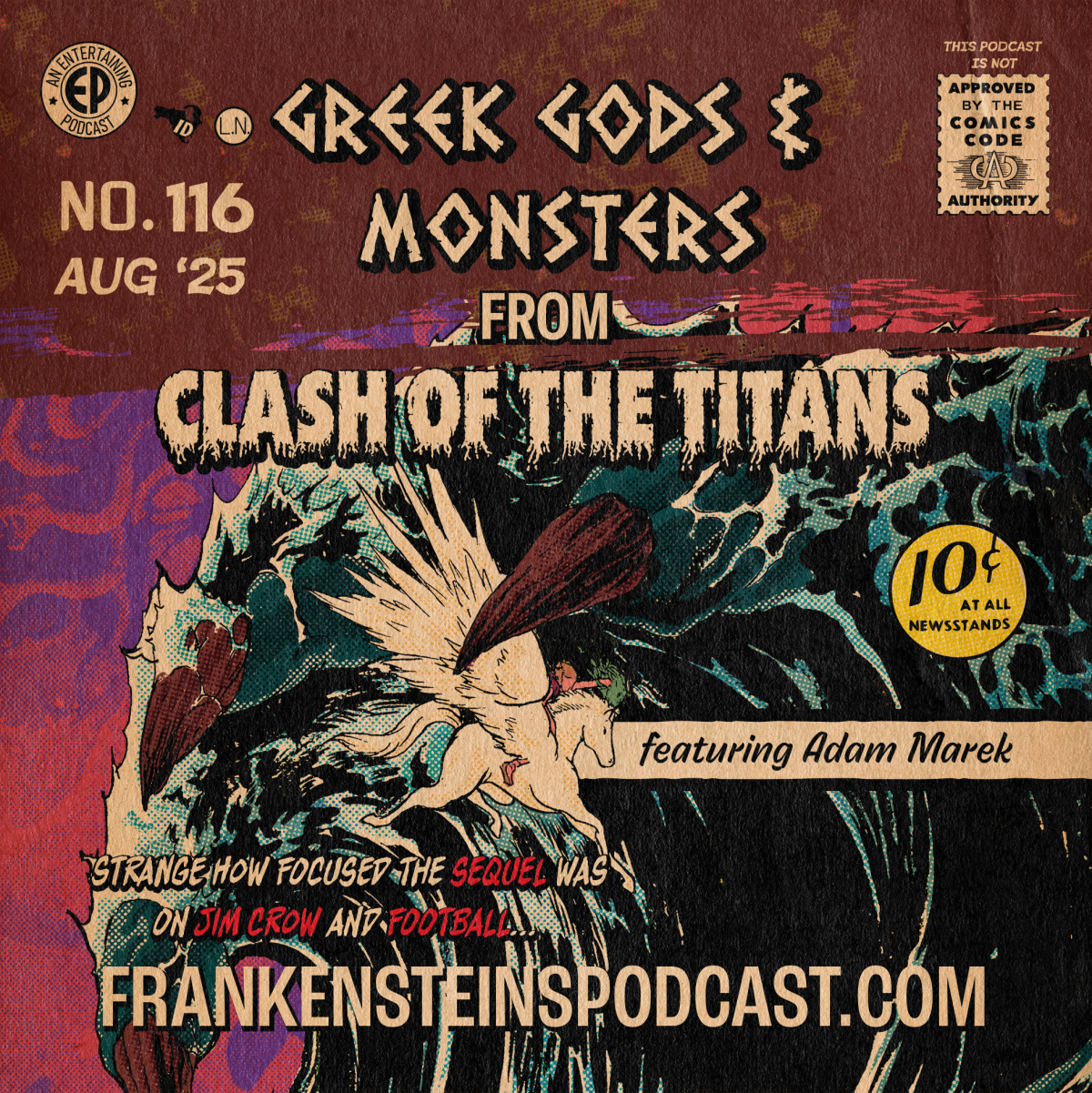Adam Marek’s Adventures in Science
Adam Marek on the making of 'The Universe Delivers the Enemy You Need'
I’ve always loved watching ‘The making of…’ programmes, which take you behind the scenes to see how filmmakers do what they do. The making of Guillermo Del Toro’s Pinocchio on Netflix was a recent marvel. I’ve noticed that a few short story writers create their own ‘The Making of…’ at the end of their books too – such as Ted Chiang and Philip K Dick.
And so, with my new story collection, The Universe Delivers the Enemy You Need, freshly published, I thought I’d share some of the adventures I had writing a few of the stories. Because these weren’t all ‘bum in seat’ efforts. Several of them were commissions that involved getting out of the office, travelling to labs and conferences and other countries to work with amazing scientists, and having mind-blowing and, on one occasion, frightening, experiences.
A horrifying night in a sleep lab
When I first found out I’d get to take part in a sleep experiment for a new story commission, I was so excited. Sleep science! I thought immediately of the 80s horror movie Dreamscape, and Christopher Nolan’s Inception, and just knew that this was going to be inspiring. But I really didn’t know what I’d let myself in for.
For my contribution to Spindles: Stories from the Science of Sleep, I’d be meeting Dr Penny Lewis at the University of Manchester, and her PhD students Maria-efstratia Tsimpanouli and Isabel Hutchison. They were working on a ‘sleep engineering’ project. This involved stimulating people’s brains while they were asleep to improve their memory processing. As an aid to digesting traumatic memories, it could lead to an effective treatment for PTSD. I was about to make some traumatic memories myself.
After I had all the electrodes glued to my head and taped to my face, the researchers sat me at a computer and gave me a memory test. I would be shown around 200 images, with accompanying musical tones and sound effects. My job was to try and memorise the position of the image on the screen. Some of the images had been chosen to trigger negative emotions, the researchers said.
The first image to appear was a kid with a balloon, accompanied by the sound of children playing. The second image was of a mangled hand in a pool of blood. Broken bones stuck through the skin. This image was accompanied by a loud scream. Holy crap, I thought. How many images did they say there’d be?
The memory test took about 45 minutes. Every second or third image and sound combination was deeply disturbing: murder victims, a dead body in the water with a head injury, a guy putting a gun to the head of another guy on a train, a burned corpse in a car, a vicious dog barking, someone being killed in an electric chair, a puddle of vomit, a filthy toilet. They went on and on relentlessly, made even worse by the associated sounds, and by the fact that I never knew whether the next image would be a man playing a guitar, or a plane crash. And worst of all, I had to really concentrate on the images to try and remember their position on the screen. It was ghastly, and I had to do it twice to see how much the repetition had improved my memory of the image positions.
During sleep, I would be played a series of tones to stimulate my brain and improve the way it processed the memory of the test. But with the phantasmagoria of gruesome images running through my mind, a tangle of wires connecting my head to the EEG machine, and the unfamiliarity of a hard bed in a lab, I barely slept.
Despite the frightening nature of the experience, the research was fascinating, and it was inspiring - the idea for a story started coming to me on the train home. The story, Left-Eye, is about a sleep engineer commissioned by a space-tech billionaire to work with some unusual patients.
What if you could grow buildings from seed?
The invitation to contribute to the book Beta-Life - Stories from an Artificial-Life Future mentioned that it would include a trip to an artificial life conference in Sicily. I was in! The conference was attended by a couple hundred scientists who are pushing the frontiers of technology into weird and astonishing places. After a couple of days of talking about swarms of robots with group intelligence, computer-brain interfaces, downloadable experiences, and autonomous insect robot assassins, I felt like I’d been given a preview of the world 60 years from now. There were also delicious cannoli at breaktimes.
Each of us commissioned writers chose an area of research we were especially excited about, and then we were paired up with the scientist who proposed it. I worked with Professor Susan Stepney, a computer scientist from the University of York. Professor Stepney was investigating whether it might be possible one day to grow buildings from seed. Rather than having architects working with concrete and girders, you'd plant different types of seeds that were programmed to grow in particular ways and with particular qualities, and then the buildings would be nurtured by gardeners until mature enough for people to live in. Even the electrics would be grown, with adapted corals created that eat metals, and are programmed to grow into a specific shape (such as the building's wiring) and then die, leaving the metal there to conduct electricity.
In my story, this technology is very advanced and being used to grow enormous skyscrapers. But there's been an unanticipated consequence - people have taken cuttings from the buildings and tried to grow their own homes. An illegally planted skyscraper has grown horizontally, out into the sea, and is now like a shanty town crossed with Jack's beanstalk.
The biggest mystery in the universe
This commission also included an invitation to somewhere amazing: CERN in Geneva! What a place! Above ground, it looks like a cross between a college campus and an industrial estate, and below ground is the 27-km ring of the collider where the search for new physics happens. Here, 500 trillion particles are compressed by magnets into beams thinner than a human hair and set whizzing round the ring at the speed of light. Inside the ring there are billions of particle collisions per second. The experiments on the ring are like giant cameras, capturing 40 million pictures of the collisions per second.
I was lucky to be visiting alongside TV presenter Spencer Kelly and his production team from the BBC Click programme who were filming a special episode about CERN and the Collision book. This meant I got access to some amazing places, including the Antimatter Factory (where they literally make antimatter), the MEDICIS facility where they make radioactive isotopes to diagnose and treat cancers, and the robot factory, where they create the robots that repair, monitor and maintain the areas of the CERN experiments where people can’t go. My work on Collision, Stories from the Science of CERN, began with a long list of potential topics related to the work going on at CERN, and proposed by researchers working there. I chose the ‘hidden sector’, proposed by Dr Andrea Giammanco, an experimental particle physicist at CERN.
The hidden sector is a possible solution to one of the biggest mysteries in the universe - where is all the matter? The way the universe behaves suggests that its mass is far greater than it appears to be. In fact, the matter we have been able to identify accounts for only 20% of the mass of the universe. So where is the missing 80%?
The hidden sector theory proposes that the missing 80% is composed of exotic particles that don't interact with any of the particles in our ‘standard sector’. That there could be exotic planets, entities and forces in the hidden sector, gliding through us unfelt and unseen. I wondered, what if our bodies as we understand them aren't all there is? What if we’re only perceiving 20% of what's actually there? What if we have exotic organs and parts of ourselves that exist in the hidden sector, that we are just the tip of the iceberg, projecting into the visible sector?
I came up with a character who might be able to observe this. Brodie Maitland is a radiologist who uses MRI machines to look inside the body and diagnose illness. One day he spots an unusual anomaly, and soon after discovers that other researchers around the world spotted similar anomalies on the same date. This is the clue that leads him to discover the hidden sector, and eventually to explore it more deeply and make some startling discoveries about life.
The Universe Delivers the Enemy you Need by Adam Marek is out now.
Buy The Universe Delivers the Enemy You Need HERE


